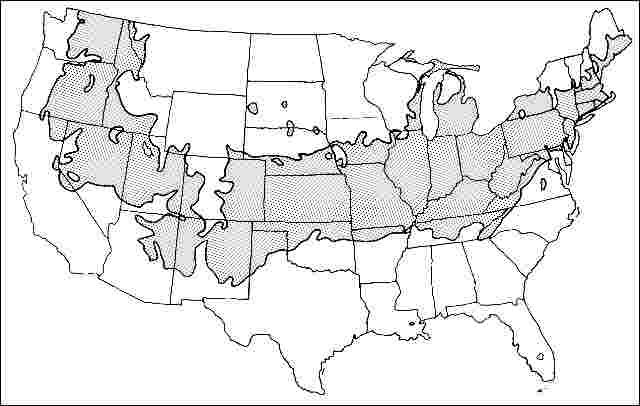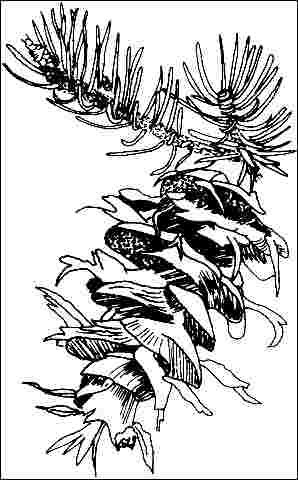Introduction
This cultivar of Douglas-Fir probably grows about 40 feet tall but spreads only about 10 or 15 feet in a dense, narrow pyramid in the landscape. This cultivar is denser than the species and is probably better suited for a screen planting. A row of these spaced 10 feet apart would make a striking border to block an undesirable view or to define a space on a large landscape. Douglas-Fir is most commonly used as a screen or occasionally a specimen in the landscape. Not suited for a small residential landscape, it is often a fixture in a commercial setting.

General Information
Scientific name: Pseudotsuga menziesii
Pronunciation: soo-doe-SOO-guh men-ZEE-zee-eye
Common name(s): 'Fastigiata' Douglas-Fir
Family: Pinaceae
USDA hardiness zones: 5A through 6B (Fig. 2)
Origin: native to North America
Invasive potential: little invasive potential
Uses: screen; specimen
Availability: not native to North America

Description
Height: 35 to 45 feet
Spread: 10 to 15 feet
Crown uniformity: symmetrical
Crown shape: upright/erect, columnar
Crown density: dense
Growth rate: moderate
Texture: fine
Foliage
Leaf arrangement: alternate (Fig. 3)
Leaf type: simple
Leaf margin: entire
Leaf shape: needle-like (filiform)
Leaf venation: parallel, none, or difficult to see
Leaf type and persistence: evergreen, needled evergreen
Leaf blade length: less than 2 inches
Leaf color: green
Fall color: no color change
Fall characteristic: not showy

Flower
Flower color: red
Flower characteristics: not showy
Fruit
Fruit shape: oval, cone
Fruit length: 1 to 3 inches
Fruit covering: dry or hard
Fruit color: brown
Fruit characteristics: does not attract wildlife; showy; fruit/leaves not a litter problem
Trunk and Branches
Trunk/bark/branches: branches droop; not showy; typically one trunk; thorns
Pruning requirement: little required
Breakage: susceptible to breakage
Current year twig color: green
Current year twig thickness: thin, medium
Wood specific gravity: 0.48
Culture
Light requirement: full sun
Soil tolerances: clay; sand; loam; acidic; well-drained
Drought tolerance: moderate
Aerosol salt tolerance: low
Other
Roots: not a problem
Winter interest: yes
Outstanding tree: no
Ozone sensitivity: unknown
Verticillium wilt susceptibility: resistant
Pest resistance: resistant to pests/diseases
Use and Management
The tree prefers a sunny location with a moist soil and is not considered a good tree for the south. It grows but struggles in USDA hardiness zone 7. Douglas-Fir transplants best when balled and burlapped and has a moderate growth rate. It tolerates pruning and shearing but will not tolerate dry soil for extended periods. Protect from direc wind for best appearance. Some occasional watering in summer dry spells will help the tree stay vigorous, especially in the southern end of its range.
Other cultivars include: `Anguina' - long, snake-like branches; `Brevifolia' - short leaves; `Compacta' - compact, conical growth; `Fretsii' - dense bush, short broad leaves; `Glauca' - bluish foliage; `Nana' - dwarf; `Pendula' - long, drooping branchlets; `Revoluta' - curled leaves; `Stairii' - variegated leaves.
Pests
Aphids infestations on small trees may be dislodged with a strong stream of water from the garden hose.
Scale and bark beetles may infest Douglas-Fir, especially those under stress.
Diseases
Root rot can be a serious problem on clay and other wet soils.
Needles infected by leaf cast fungi in spring turn brown and fall off.
Several fungi cause canker diseases leading to branch dieback. Maintain tree health and prune out infected branches.